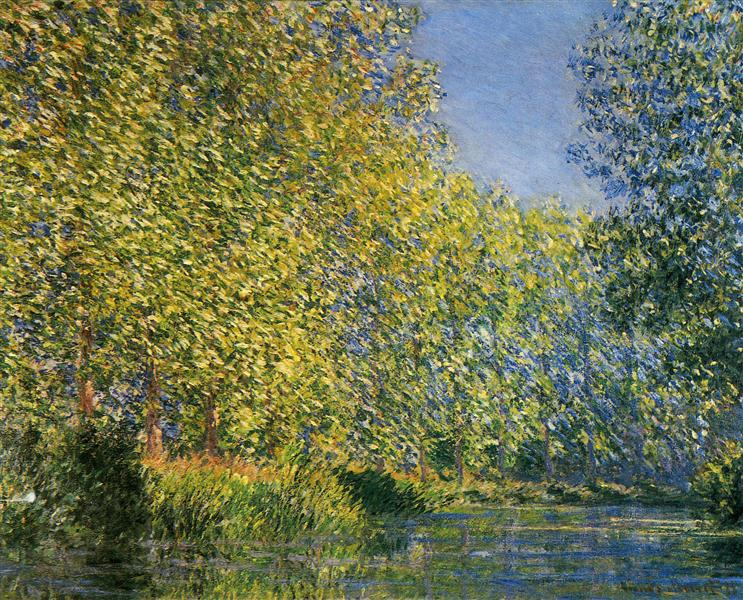Description
The painting “Bend in the River Epte,” created in 1888 by Impressionist master Claude Monet, is a work that encapsulates the essence of his interpretation of the landscape through his distinctive use of light and color. Located in a bend in the Epte River near his home in Giverny, this work is a reflection of the artist’s closeness to nature and his ongoing quest to capture its ephemeral nuances.
The composition of "Bend of the Epte River" is characterized by a balanced arrangement that guides the viewer's eye through the landscape. The meandering river draws a line that divides the canvas, creating a sense of movement and fluidity. Monet employs an almost panoramic approach that allows both the expanse of water and the surrounding vegetation to be appreciated. In the foreground, a great variety of greens can be seen, which, together with the touches of brown and gold in the vegetation, give depth and richness to the scene. These greens are typical of Monet's style, who had a remarkable ability to depict the changes in light on leaves and water.
The palette used in this painting is infused with saturated hues that evoke the vibrancy of the surroundings. The hues of the water reflect the sky, which is rendered in different shades of blue, creating a natural mirror that seems to vibrate with life. The loose, expressive brushstrokes, one of the hallmarks of Monet's style, allow the work to breathe and be perceived as a frozen instant of the natural world.
As for the presence of human figures, this work is notably devoid of characters; instead, Monet focuses on the interplay between water and light, along with the surrounding flora. This approach is representative of the artist's mature stage, where he chooses to evoke a sense of serenity and contemplation through nature rather than human intervention.
Interestingly, Monet painted this work at a period when his style was consolidating, moving away from academic realism towards a more intimate and personal representation of the landscape. The work joins the series of landscapes where the Epte River appears as a recurring theme in his work, which underlines his desire to explore and capture the essence of the place he loved.
The “Bend of the Epte River” aligns with other works by Monet, where light, colour and atmosphere play a crucial role, such as in “Impression, Sunrise” or “The Water Lilies”. This work maintains a dialogue with his exploration of water as a dynamic subject that reflects not only the immediate environment, but also the artist’s sensitivity to changing nature.
In conclusion, “Bend of the Epte River” is a testament to Monet’s mastery of Impressionism and his ability to draw out the sublime from nature. Through its composition, vibrant palette, and attention to detail, this work serves not only as an example of Monet’s talent, but also as a reminder of the power of art to capture the essence of ephemeral moments in space and time. His dedication to observing and capturing nature becomes an invitation to the viewer to experience the beauty in the simplicity of the world around us.
KUADROS ©, a famous painting on your wall.
Hand-made oil painting reproductions, with the quality of professional artists and the distinctive seal of KUADROS ©.
Painting reproduction service with satisfaction guarantee. If you are not completely satisfied with the replica of your painting, we will refund 100% of your money.

